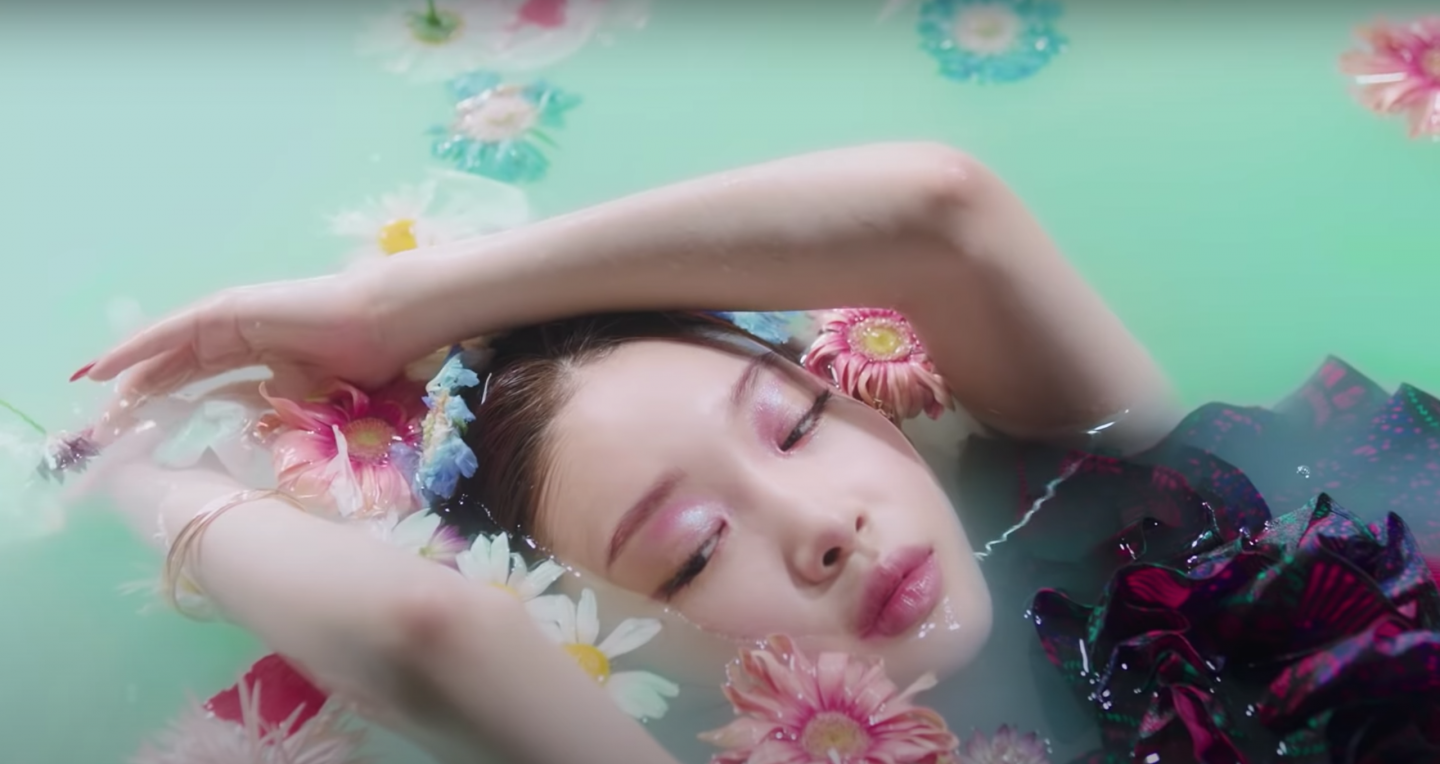
Chunghas recent single, “Play”, follows April’s “Stay Tonight” as her second pre-release single from her upcoming first full-length album. While “Stay Tonight” was a glittering, atmospheric house track, “Play” is a fun, bright pop dance track with Latin and reggae influences.
Many of Chungha’s previous summer-style releases, including her debut MV “Why Don’t You Know” and 2018’s “Love U”, featured relatively generic costumes and summery settings (poolsides, the beach, a street). However, starting from 2019’s “Gotta Go”, Chungha’s MVs have become more identifiable as her own.
Many of the elements explored in last year’s MVs, from “Gotta Go”’s stylish costumes to “Snapping”’s use of colour, make their reappearances in new forms in “Play”. In fact, it could be said that “Play” is “Gotta Go”’s summery sister, who invites her lover to come “play” with her, rather than slowing his advances by telling him she has to leave by midnight. Throughout “Play”, the colours, settings and costumes showcase Chungha’s ever-growing identity as an artist, and allow her to showcase many aspects of her personality, while also acting as a visually stunning journey across spring and deep into summer.
“Play” relies a lot on many staples of K-pop girl group MVs, such as vibrant colours and flowery motifs. Blue and green are seen most often in the MV, but so is red. Flowery motifs largely occur in scenes where blue and green are most prominent, and add additional vibrant colours to the scene. For example, in one scene, Chungha dances in front of a small yellow backdrop with a larger green background of several trees. In another shot, she floats in light blue water while flowers of various colours drift around her.
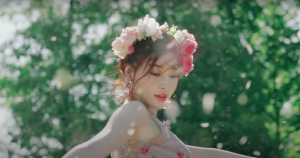
Some of Chungha’s costumes are also floral, including two white dresses–one adorned with flowers, and a layered one. Her makeup in these scenes is light, and red blush adds some colour to her face. This use of makeup gives Chungha a fresh-faced, soft look. Altogether, these flowery scenes create the sense of a carefree, beautiful spring leading into summer. The styling gives Chungha a certain pure and elegant beauty, and she too seems to bloom in the midst of it all.
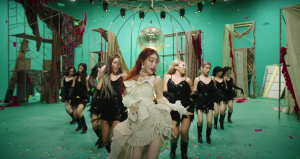
Blue and green coloured backdrops are also used during the performance scenes, including one set in a small theater. The costumes are what truly make these scenes, especially Chungha’s white, layered dress. The bustle-like ruffled fabric on the back of the dress, along with the boots, gives the dress a Victorian Steampunk or burlesque-style vibe. The Victorian styling adds to the dress’ classiness and gives it a romantic flair, while the steampunk/burlesque elements give it a certain edge. The set adds to the burlesque vibe of the scene by giving the impression that Chungha is performing in a theatre.
The MV features Chungha’s performances significantly, which reference Spanish and Latin dance styles, as well as elements of these cultures. These include Chungha’s flamenco-style dresses, her salsa dance with the male dancer, and sections where her back-up dancers perform capoeira moves. The purple and red dresses later in the MV seem more directly inspired by Spanish and Latin styles, while the layers of the white dress mentioned above, despite appearing Victorian, could also be subtly inspired by the ruffles of flamenco dresses.
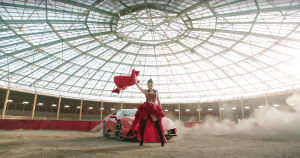
The references to Spanish and Latin culture are also established by the use of red, which is introduced in the second half of the MV. Chungha stands in the centre of a bullfighting ring, waving a bright flag in front of her “bull”— a car of an equally deep red as the flag. Whereas the green and blue scenes largely featured Chungha surrounded by nature and flowers, in the red scenes, she is interacting with a machine. This contrast between machinery and the natural world deepens the divide between the world of the blue and green colours, and the world of the red.
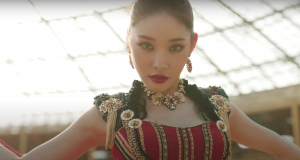
In the bullfighting scenes, Chungha wears a dark red flamenco-inspired dress accented with black. Her makeup is also heavier and darker, and she often glares directly at the camera, her expression one of confidence and purpose. In addition, the bullfighting ring is of course filled with sand, which is often associated with summer and beaches, as well as with deserts and heat. It contrasts with the trees, flowers, and blue pool earlier in the MV. While the blue and green scenes were filled with gentleness, carefreeness, and purity, Chungha in these red scenes becomes the scorching heat of summer.
Similarly, red is also used in the MV to indicate passion and sensuality— one of the only moments the MV relates to the lyrics of the song:
Don’t hide those passionate eyes
Just blow your mind
I feel your breath getting rougher
And I can’t take no more
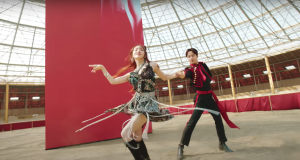
The passionate mood is also created through a sensual salsa dance between Chungha and a male dancer. Her costume during these scenes is also black, with some silver highlights, which is in direct contrast to the white layered dress she was wearing earlier. The contrast between costumes in the different scenes spotlight different aspects of Chungha: her flowery dress gives her a gentle, pure, almost maidenlike quality, while her costumes in later scenes highlight her confidence, power, and fire within.
The contrasts throughout the MV— from the blue/green vs. red colour schemes, to the black and white of the costumes, as well as the nature vs. machinery/desert themes— alongside the cultural references give this MV a sense of dynamism. Chungha shows that she can be lots of things at the same time: soft and gentle, hard and focused, all while retaining her now-signature elegance, and her own sense of power.
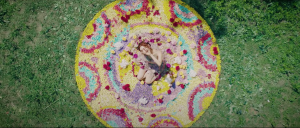
At the same time, the bright colours of the MV, the flowery motifs, the fast-paced editing style and the catchy, excellent song itself allows “Play” to retain its accessibility for K-pop fans. It not only highlights but celebrates dance, and is a visual spectacle that adheres to many of K-pop’s best MV cliches, while also bringing in references to Spanish and Latin dances. The end result is a beautiful festival of colours and dance.
The song and the MV showcase Chungha’s growth as a young woman, as well as a talented performer and singer. Considering that it is only the pre-release for her upcoming album, “Play” is truly an impressive effort. When considered alongside “Stay Tonight”, it is clear that Chungha is gearing up to showcase even greater versatility and skill, an indication that this next album is sure to be very promising indeed. Overall, “Play” is aurally and visually luscious and enticing, with a clear message: Chungha is still growing as an artist, and she is showing no signs of slowing down.
(YouTube. Images via MNH Entertainment.)
